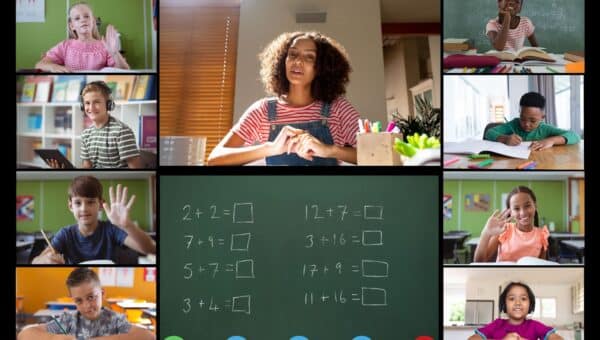Education technology is here to stay, and many stakeholders in the education system are embracing the inevitable shifts and transformations required on the EdTech journey. According to McKinsey, 81% of the educators they surveyed feel that education technology represents a good investment of time and effort relative to the value it provides. This seems to indicate that the right technological solutions can enhance the learning experience while also making the lives of teachers, lecturers, and school administrators that much easier.
However, this doesn’t mean that it is smooth sailing to get there. Changing the paradigm of an educational experience and introducing new processes and workflows comes with its own challenges. Many schools, universities, and even companies have discovered that this transition can come with significant growing pains – that ultimately undermine the original learning purpose if not dealt with correctly. In this article, we’re going to explore why this is the case and delve into what education companies can do to mitigate these challenges and help their customers make a more seamless transition.
Why Is It Difficult to Implement New Education Technology?
There are several different factors that make it difficult to implement new education technology, and if you are a vendor for these solutions, you need to understand them so that you can meet your customers where they are.
Here are some of the most common pain points:
There are too many solutions to choose from.
As the industry has expanded, the sheer number of different EdTech solutions available has increased by orders of magnitude. This is exciting because it demonstrates growth and increased adoption, but it also creates challenges.
Firstly, some educational institutions get a little carried away and want to start implementing everything that seems exciting. This is almost always a mistake because you end up with a solution in search of a problem.
Secondly, if you do have a genuine need, it can be difficult to choose the right tool for that purpose. Here, it is important to take a step back, look at things from a larger perspective, and get clear about what you’re trying to accomplish. Having clarity about your underlying objectives makes it possible to be intentional and strategic with the technology that you deploy.
Lastly, there is a risk of what University Business calls “EdTech fatigue and burnout” which perfectly describes what can happen if there are too many solutions being implemented. Once this sets in, it can be difficult to win back the trust and buy-in of the teachers and administrators.
There are too many different passwords and logins to keep track of.
This might seem trivial to some, but it is a very common complaint we hear from educators as they try to keep track of all the technology that they have to utilize. The more complex and interwoven the tools become, the more of an administrative burden it causes – pulling valuable time and resources away from what actually matters – the teaching itself.

It is difficult to integrate solutions and data into existing technology stacks.
It’s very rare that you get the opportunity to implement a new EdTech solution with a blank slate. Instead, you’re often having to integrate with an existing technology stack and an existing set of processes and workflows that are already embedded in the educational institution. Research from McKinsey bears this out and shows that the technology must be carefully matched to the instructional environment and the wider context of the student body.
Too often, the excitement around the features and functionality of a tool receives the majority of the time and attention, while the social integration and change management required to make that technology work doesn’t get considered.
There is pushback on virtual learning.
The natural trends within EdTech have exposed more students to virtual or hybrid learning environments that don’t require consistent in-person interaction. Of course, this was crucially important during the pandemic because students weren’t able to gather in one place physically. But even post-pandemic, we’ve seen a lot of these online teaching norms become established practices because of their benefits in terms of flexibility and accessibility across all different types of subject matter. However, it is important that educational institutions also grapple with the challenges that this style of instruction creates.
Research from Meagan Loyst demonstrated that there is a non-trivial portion of the student population who are struggling with peer-to-peer and student-to-professor engagement in these hybrid and virtual environments. The digital divide can make it more difficult to be heard and acknowledged when one is on a video call, and that can negatively impact the student’s experience and, ultimately, their performance.
As such, educational institutions that seek to leverage the power of virtual and hybrid learning environments need to focus increasingly on ways to ensure that every student gets the chance to engage and participate.
The feedback and communication loops are often ineffective.
Too often, education technology is implemented without truly engaging with the people who are going to use it. This immediately creates a gap in expectations that can lead to conflict and ultimately the loss of appetite for adopting and leveraging the new tools. Without regular communication and tight feedback loops, the EdTech providers can lose sight of the real needs of their customers and the experience can suffer as a result.
These tools can open the door for plagiarism.
The hot topic at present is, of course, how artificial intelligence is going to impact the educational paradigm as we know it. The effect of, control of, and use of artificial intelligence is a major theme. Any new technology can create new loopholes for potential plagiarism as it requires the software/model to act as the medium through which the student submits work to the teacher. This is concerning for many educational institutions, and it can be a real sticking point that gets in the way of implementing the technology in the first place.
The funding landscape will change.
Finally, it would be remiss not to mention that the financial incentive that was the ESSER funding platform is ending in September 2024. This was a catalyst for EdTech investment, and the industry benefited as a result, but as this support falls away, educational institutions will have to identify new sources of funding for EdTEch innovation. This is going to put pricing pressure on EdTech providers and force teachers to truly consider what tools are necessary and which can be postponed or even discarded.
All of these challenges are in play when an EdTech vendor seeks to convert a new customer. Most of this relates to a lack of teacher/trainer understanding on how to optimize educational tech tool use in a healthy way. Finding the solutions to these hurdles is what will get that proposition over the line.
What Can EdTech Companies Do to Help Their Customers Overcome These Challenges?
Here are some of the key principles that can help to smooth over the growing pains and assist educational institutions with making the shift to new technology.
Professional development.
EdTech technology is still new for certain educators and the way that they used to teach needs to change for this new context and delivery method. There is often a digital literacy gap that needs to be traversed so that you aren’t just favoring your tech-savvy instructors and ignoring everyone else. By offering training and coaching for educators to help them maximize the potential of the technology, they can make better use of what is at their disposal and be more aware of the social challenges that are at play.
Helping with product implementation.
Offering sufficient support in terms of product implementation can be hugely helpful because it helps to shortcut the learning curve related to integrating the technology into daily processes. Rather than just providing the solution and then moving on, the best EdTech vendors seek to walk the journey with their clients and help to customize their offering to better suit the individual client that is implementing it.
Focusing on improving UX to make solutions more engaging.
On a more technical side, optimizations to the user experience should never be underrated. Every small tweak that can make a solution more engaging and useful will have a disproportionate impact on how that tool is perceived and used in an educational environment.
Improving feedback loops.
By being more mindful and listening to students and teachers about what is working and what isn’t, EdTech providers can make the changes that are needed to improve the experience. Often, it just takes some subtle changes to the way classes are being run or the way that a specific tool is being used to make meaningful changes for a student experience. Formal and informal feedback loops can provide the insight needed to implement these modifications and improvements.
Combining these tactics and delivering a unified, holistic solution is the best way to navigate the obstacles and deploy meaningful education technology that actually makes a difference.

What Can Educational Institutions Do To Help Themselves During a Technology Transition?
Of course, there is also a responsibility that lies with the educational institutions themselves. They also have to buy into the vision and help to create the right environment for this technology to thrive.
Here are three key pillars where they can help to help themselves along the transition:
Conduct regular EdTech audits.
A regular EdTech audit can help an educational institution take stock of what impact their technology is actually having on a sustainable basis. The goal is to identify any technology that has become redundant or irrelevant – so that it can be fixed or removed entirely. This can help to unearth important insights about the unique characteristics of your particular institution and how these manifest in the way that technology integrates into the system. In addition, it helps to avoid EdTech fatigue if you are constantly assessing whether you are leveraging your resources effectively.
Agree on key impact metrics in advance.
By agreeing on exactly what you’re trying to accomplish and how you’re going to measure success, it makes for a more objective and accurate picture of how the technology is performing compared to your expectations. This helps to fine-tune your operational decision-making and smoothes over some of the growing pains that you can avoid.
Additionally, you can help avoid expectation mismatches with the vendors you use because you have clarity on what matters for each particular implementation.
Change your mindset and back it up with action.
Shifting to these new technologies requires a paradigm shift in how things are done. Educators need to adapt to the new technology and embrace it in order to make learning more interactive and engaging. It’s not realistic to expect the old status quo to work in this new format – it requires evolution. The educational institutions that are able to transform student engagement when using these tools are the ones who are going to get the most out of them. Otherwise, they risk becoming a barrier to learning, rather than enabling the best parts of what we’re trying to achieve with this new frontier.
Acknowledging the challenges, The Renaissance Network is excited to be a part of this innovation journey with EdTech
We hope that this article has illuminated some of the common growing pains that come with new EdTech implementations and how you can navigate them in your specific scenario. Being aware of these and addressing solutions proactively can make a huge difference to your overall success.
Here at The Renaissance Network, we are excited to be a part of this innovation journey with EdTech. We will continue to support the missions of great Education companies by helping them attract, hire, and retain key leaders and individual contributors who can take them to the next level. If you’re looking for help in finding and hiring those A-players, be sure to get in touch today, and let’s see how we can help!



